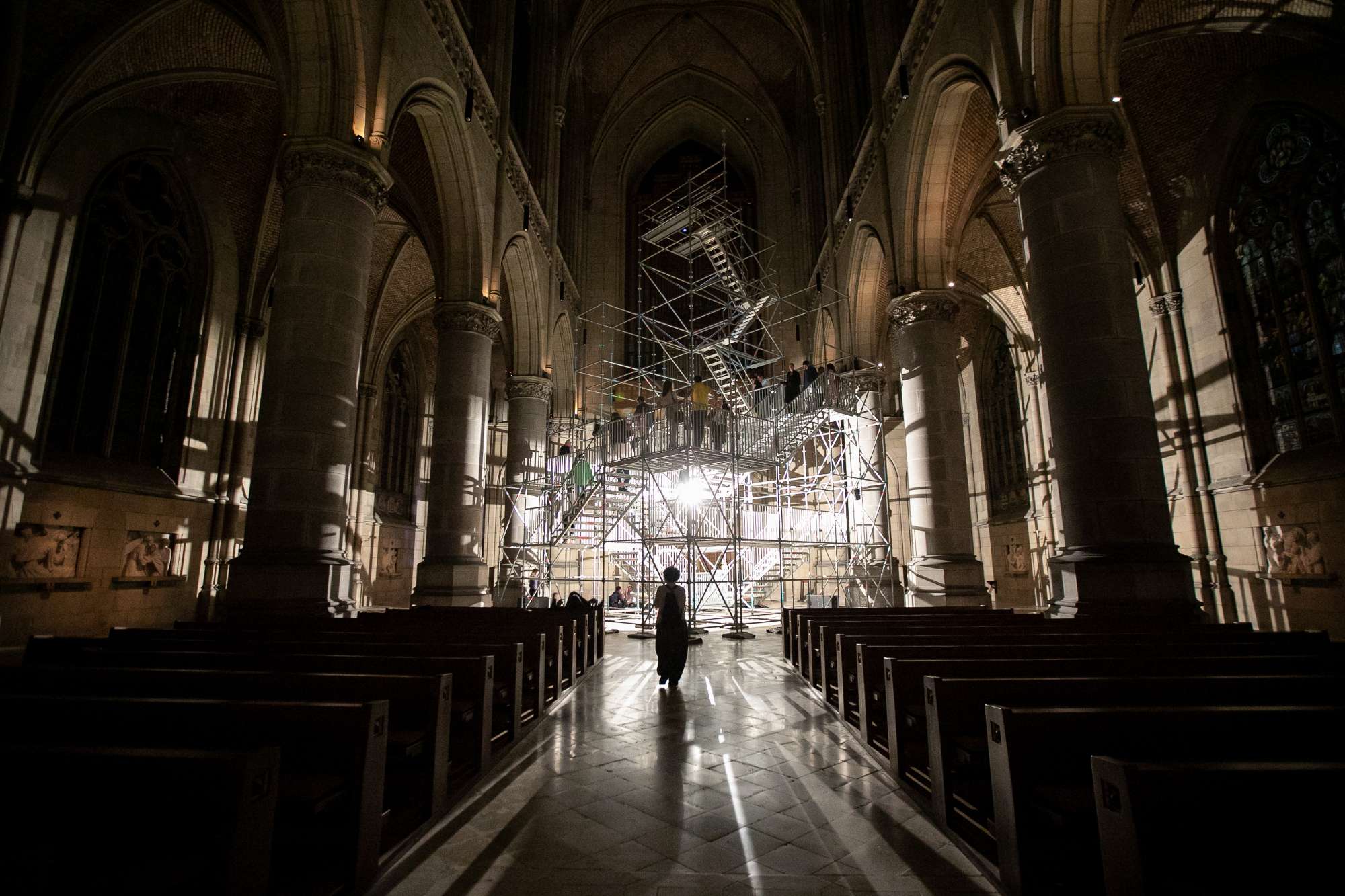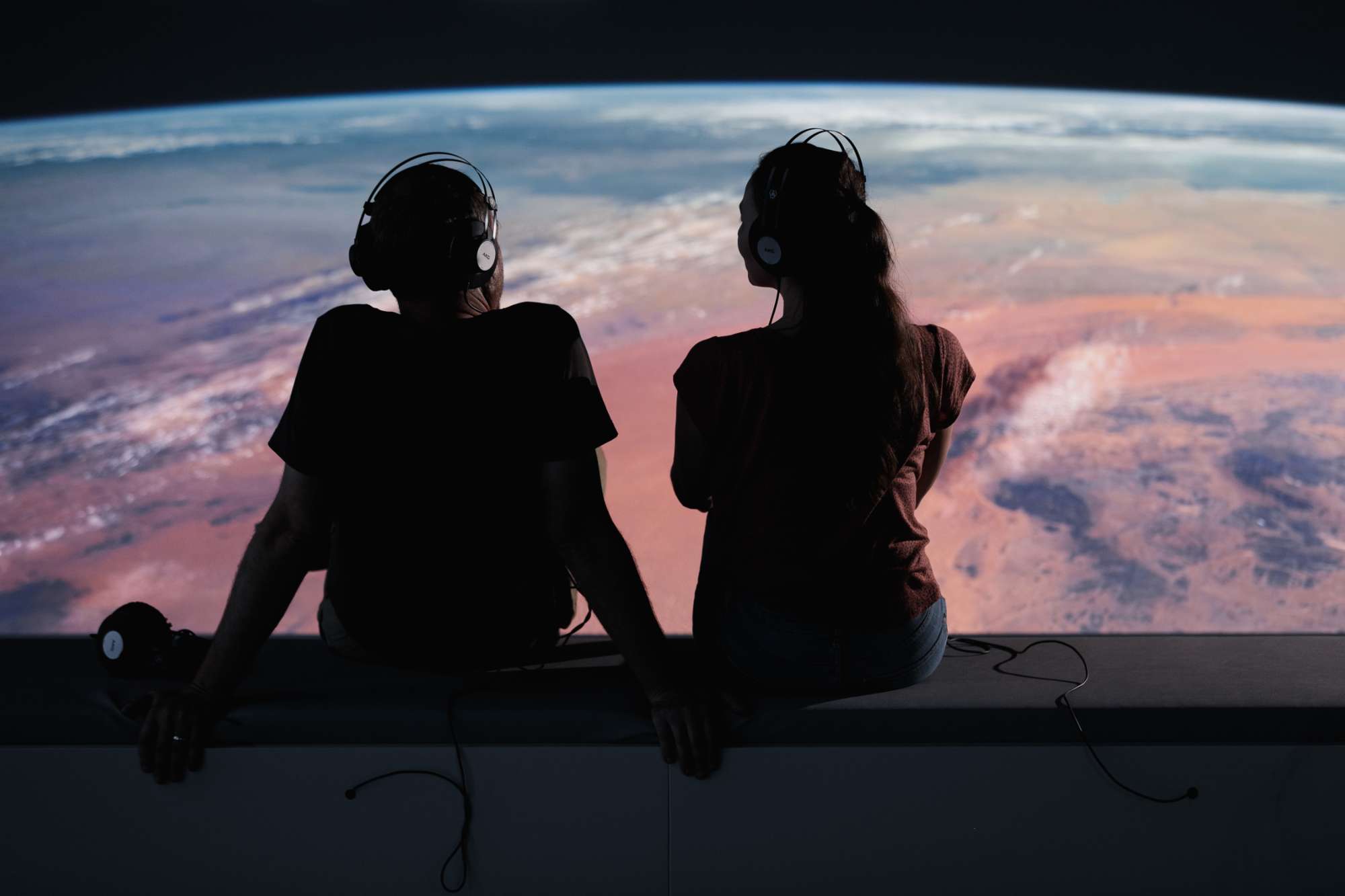
Ars Electronica: Sculpting Digital Art’s Societal Impact
At the crossroads of art, technology, and society, Ars Electronica stands as a monument to digital transformation. Since its inception in 1979, it has been more than just a festival; it’s a continuous dialogue on the evolving relationship between technology and human experience.
The article explores its transformative role in the world of digital art, highlighting how it has not only showcased, but also actively shaped its trajectory.

Ars Electronica: A Festival Ahead of Its Time
From its earliest days, Ars Electronica did more than just witness the digital art movement; it propelled it. From virtual reality to AI, Ars Electronica consistently remained ahead of the curve, setting global trends and ensuring a human-centric approach to technology.
Founded on September 18, 1979, by visionary Hannes Leopoldseder and his team, including electronic musician Hubert Bognermayr, music producer Ulli A. Rützel, and physicist Herbert W. Franke, Ars Electronica emerged as a groundbreaking event.
They sought to bring together 20 thinkers from across the globe to Linz, creating a crucible for discussions on the burgeoning digital revolution — a small yet revolutionary event that laid the foundation for what would become the world’s most significant festival of its kind.
Celebrated annually since its founding, the festival gathers over a thousand thinkers in Linz. Apart from the festival, the Prix Ars Electronica Exhibition, initiated in 1987, rewards groundbreaking projects, with the Golden Nica being the zenith of achievements in the global media art scene.
Over the decades, luminaries from diverse backgrounds have contributed to Ars Electronica’s rich tapestry. Pioneers who participated from 1972 to today include:
-Nam June Paik: Often hailed as a pioneer of video art, Paik’s innovative and provocative use of technology anticipated many digital art trends.
-Lynn Hershman Leeson: Recognized for her groundbreaking work in interactive art and virtual reality.
-Ryoji Ikeda: The Japanese artist is famed for his audio-visual installations that delve into human perception and the concept of infinity.
-Rafael Lozano-Hemmer: Renowned for large-scale interactive installations that engage audiences in unexpected ways.
-Olafur Eliasson: While primarily known for his installation art, Eliasson has showcased works at Ars Electronica leveraging technology and interactivity in novel ways.

Humanity at the Core: Ars Electronica’s Unwavering Philosophy
Despite the rapid developments in technology, one thing remained at the core of Ars Electronica: the human experience. It’s a place where technology serves art, and art reflects on society. This human-centric approach ensures that amidst the digital whirlwind, individual experiences and emotions remain paramount.
The festival’s commitment to this philosophy is evident in its various initiatives like the Ars Electronica Futurelab, involving an interdisciplinary team of artists and scientists and the create your world program: a year-round program developed in collaboration with young people that includes a competition for under 19s, its own festival, and a regional tour.
In this way, young people are encouraged to move beyond being mere users of technology and discover novel ways to act and create. Artists here don’t just use technology; they converse with it, challenging it, and coaxing it into revealing new dimensions of expressiveness.
Ars Electronica’s platforms have showcased pieces that resonate deeply, touching on themes of love, loss, joy, despair, and societal critiques. Pixels, code, and interactivity are used by artists to weave narratives as poignant as any classic masterpiece, proving that technology can be as evocative and authentic as any traditional medium, in the hands of those who can grasp its true potential.

Expanding Horizons: Ars Electronica’s Global Footprint
While Ars Electronica’s heart beats in Linz, its influence transcends borders. The festival recognized early on that digital art was a global language. From exhibitions in New York in 2004 to collaborations in Tokyo and Osaka since 2016, it has consistently engaged with a worldwide audience, curating exhibitions, workshops, and interventions to make digital art globally accessible.
In particular, their format Ars Electronica Export allows it to share its experiences globally, providing access to the expertise of their networks through consulting, conception or production for exhibitions, screenings or performances, new forms of residencies, or general development of new formats.
But also through Ars Electronica Solutions (founded in 2013) which develops market-ready products inspired by the visions and prototypes developed by the Ars Electronica artistic ecosystem.

Navigating the Future: Ars Electronica’s Forward-Thinking Approach
With digital transformation reshaping every facet of our lives, Ars Electronica represents the future of innovation. Its commitment to examining the digital evolution goes beyond mere observation—it seeks to lead the discourse, challenge conventional knowledge, and present a vision of what a harmonious fusion between art, technology, and society could look like.
The Future Thinking School, one of the festival’s pioneering initiatives founded in 2019, is a testament to this commitment. By equipping institutions to adeptly navigate the digital revolution, it underscores the importance of proactive adaptation in this rapidly evolving landscape. This isn’t just about understanding technology or utilizing it; it’s about foreseeing its implications, potential pitfalls, and opportunities, and guiding its development in ways that prioritize human values and aspirations. Such forward-thinking is crucial, especially as digital tools increasingly intertwine with our daily lives, workplaces, and personal identities.
On the other hand, Home Delivery was Ars Electronica’s response to a world grappling with new norms in the wake of a global pandemic. Launched in 2020, at a time when global movements were restricted and physical gatherings became a rarity, this initiative speaks to the festival’s agility and its finger-on-the-pulse understanding of global digital culture. Recognizing the shift towards remote engagement, Ars Electronica tapped into the potential of the digital space to bring artistic-scientific explorations right to audiences’ doorsteps, irrespective of geographical boundaries. This wasn’t just a solution to a temporary problem; it’s a glimpse into the future of how art and education might become more accessible, inclusive, and omnipresent.
Such initiatives by Ars Electronica resonate deeply within the broader digital culture. They remind us that in the face of unprecedented challenges, human ingenuity paired with technology can craft meaningful solutions. More importantly, they emphasize that right now, as we stand at the edge of the future, it’s not the technology itself, but our vision, approach, and intent with it, that will shape the world to come.

Preserving the Legacy: Ars Electronica’s Time Capsule of Digital Evolution
As the digital culture unfolds, chronicling its trajectory becomes an imperative. Time blurs memories, blurring the nuances of significant moments. In its early years, Ars Electronica recognized the importance of preserving the intricate tapestry of digital art’s evolution and created the Ars Electronica Archive so that future generations could easily trace its origins, influences, and milestones.
The Ars Electronica Archive is more than a repository—it’s a living museum of digital innovation and artistic exploration. Each entry, meticulously documented since 1979, encapsulates a moment, a thought, an experiment, or a breakthrough.
With over 75,000 projects spanning texts, images, and videos, it offers an unparalleled insight into the creative minds who have contributed to the festival over the years. From exemplary interactive installations to thought-provoking discourses on the symbiotic relationship between art and technology, the archive captures it all. And in doing so, Ars Electronica is not just preserving its own legacy but that of the entire digital art community.
To grasp the magnitude of this undertaking, one must envision the archive as a monumental time capsule: a capsule that future artists, technologists, and historians can explore, drawing inspiration, understanding context, and building upon the foundations laid by visionaries of the past.
In an era dominated by transient digital experiences, the Ars Electronica Archive is a testament to the power of preservation. It challenges us to not just create and innovate but to value, chronicle, and share, ensuring that the digital art discourse remains rich, informed, and ever-evolving.

Ars Electronica: Where Art, Tech, and Humanity Intersect
From its roots in linz, Ars Electronica embodies the spirit of digital transformation, connecting art, technology, and society, becoming a global touchstone for digital art. Each artist, discourse, and initiative tells a story—a collective narrative of humanity’s progression in the digital age.
Most importantly, Ars Electronica’s enduring impact underscores the significance of purposeful creation and genuine human connection.
Reflecting on its profound legacy, it’s evident that art and technology are more than just tools; they’re extensions of our human experience. As we move forward in this digital age, Ars Electronica guides stands as a prime example of how one can harness technology to enrich, rather than overshadow, our shared human journey.
fakewhale
Founded in 2021, Fakewhale advocates the digital art market's evolution. Viewing NFT technology as a container for art, and leveraging the expansive scope of digital culture, Fakewhale strives to shape a new ecosystem in which art and technology become the starting point, rather than the final destination.
You may also like
Leander Herzog ‘s Contemporary Minimalism and Innovative Abstraction
Leander Herzog, also known on Twitter as @lennyjpg, is a generative artist who manipulates the langu
Cory Arcangel: The Artist Rewriting the Codes of Digital Culture
Cory Arcangel, born in Buffalo, New York, in 1978, emerges as a pioneer in the digital art landscape
Debunking the Myth: Not All NFT-Based Art is Crypto Art
Amidst the fast-paced world of digital art and blockchain technology, defining what constitutes &#




